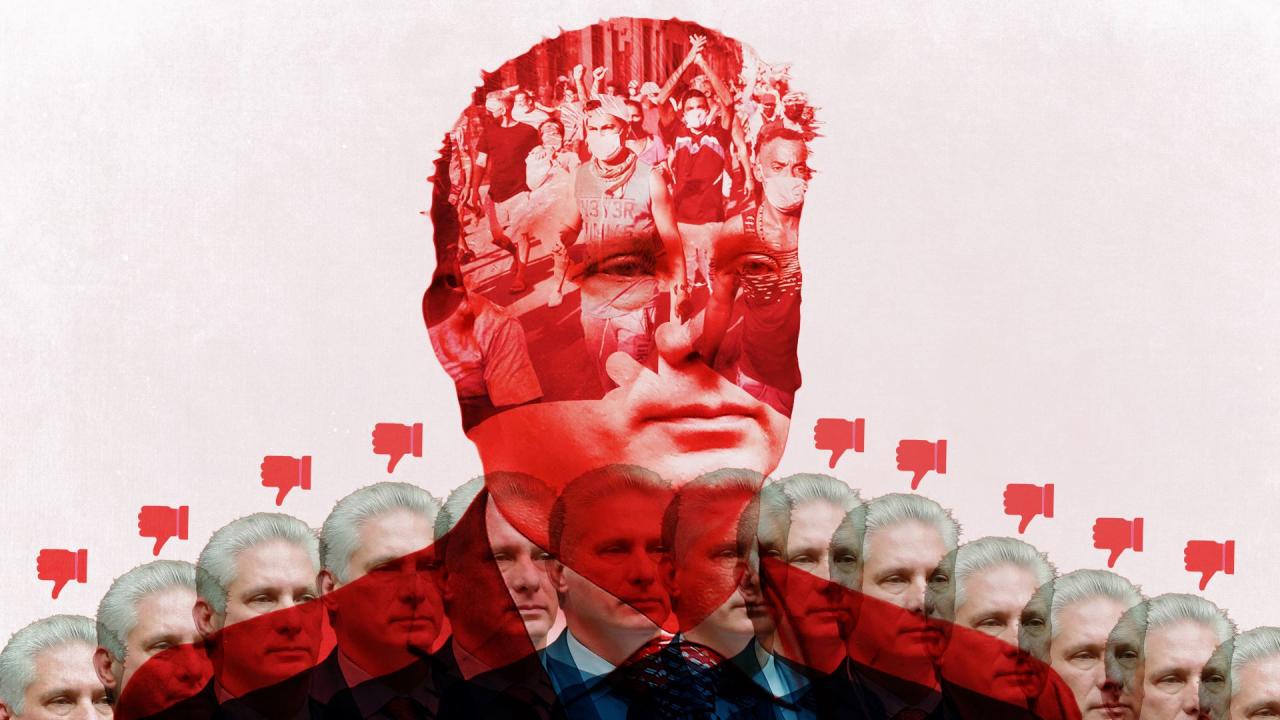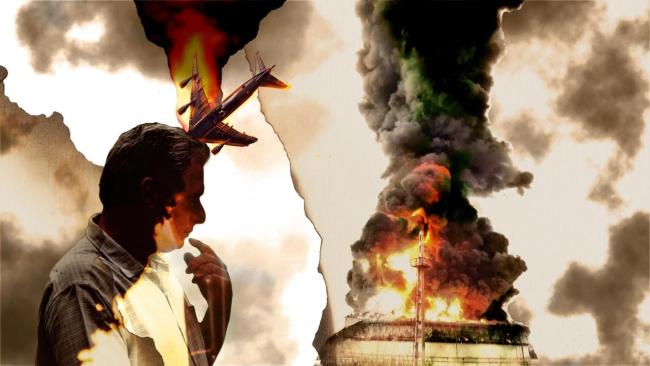In the nearly five years since his appointment as president of Cuba, Miguel Diaz-Canel has been the target of more protests than any of his predecessors, since 1959 though it is true that he has not had much competition: in 59 years the position was held before him by only Manuel Urrutia (six months), Osvaldo Dorticós (1959-1976), Fidel Castro (1959-2008) and Raúl Castro (2008-2018).
Several factors are behind the fact that Díaz-Canel has been the object of more anti-government demonstrations than Fidel and Raúl Castro: in addition to his bungling performance at the head of the country, there is the fact that he does not bask in the aura of the landing of the Granma, or the guerrilla campaign in the Sierra Maestra; he did not participate in the overthrow of any dictator (rather, he was appointed by one, to perpetuate a dictatorship); and he did not come to power by force of arms, or even the popular vote, such that Cubans do not feel any debt to him.
But Díaz-Canel's worst enemies have been the Internet and social media, more effective than human memory in rescuing from oblivion his ridiculous attitudes, and every popular demonstration against him, which, under other circumstances, might not have been recorded, such that it would have been as if they had never happened.
There is not enough space to record, for example, all the manifestations of popular discontent covered by the independent press, or by the Cuban Conflicts Observatory, since 2018. Although the most momentous demonstrations were those of July 2021, known as the 11-J protests, Cubans had previously challenged the government led by Díaz-Canel.
In 2018, art curator and activist Yanelys Núñez covered herself in excrement in a performance against Decree-Law 349. This was just one of the actions by independent artists, and several linked to institutions, against the first law approved by Díaz-Canel. Actions included a protest in front of the Ministry of Culture, aborted when the protestors were arrested and beaten; and a concert in the neighborhood of San Isidro, which was broken up. The pressure, however, caused the regime to back down in the application of the first decree-law of the ruler appointed by Raúl Castro, such that it became a legal dead letter.
2019 saw the first independent march by the Cuban LGBTI community, which, ignoring the regime's suspension of the parade against homophobia, went out to demand their rights to the streets. The response, of course, was repression; the regime does not mind if you are a lesbian, gay or trans person, but it does mind if you defy the institutions created by it.
In 2020 the San Isidro Movement took up its position, with protests by artists, activists, intellectuals and independent journalists ensuing in front of the Culture Ministry.
In 2021 the largest anti-government protests in Cuba since 1959 erupted in more than 50 locations. The palliative measures taken by the government headed by Díaz-Canel, such as the lifting of tariffs on the importation of food, medicine and toiletries, and the delivery of ration books to Cubans who did not have them after decades of Revolution, were not enough to quell the discontent.
In 2022 the Cuban Conflicts Observatory reported hundreds of protests in several months. In December of last year alone 692 took place, according to the Observatory.
The most notable of the year, without a doubt, were those that began on September 29 after a blackout lasting over 72 hours in the wake of Hurricane Ian, lasting several days. At those demonstrations Cubans demanded the restoration of electricity, and the water supply, but also shouted anti-government slogans.
The protests began on September 29 in the Havana municipalities of Arroyo Naranjo, El Cerro and Batabanó, in the province of Artemisa. A day later they spread to Puentes Grandes, Guanabacoa, Calzada de Bejucal and the department of Calabazar, also located in Arroyo Naranjo, and continued in the communities of Mantilla and La Palma, of that municipality, in addition to El Cerro.
In Mayari, Holguin province, there was at least one protest during the evening of September 27. On the night of the 29th the regime even mobilized off-duty police, and several residents in the province reported the presence of police cars on the streets.
In the previous months the prolonged blackouts had generated a wave of mass protests in various parts of the country, such as Pinar del Río and Camagüey. In this last province, in June 2022 college students chanted "Give us some power," after a 15-hour blackout. Two months later, the municipality of Nuevitas was the site of two protests in less than 24 hours. The people pushed back a truck of "black beret" troops, captured in a video released on social media.
Returning to July 2021, following the protests Díaz-Canel became the ruler who has most directly called on Cubans to assail their own countrymen, since 1959.
When the protests began, on July 11, in San Antonio de los Baños, Díaz-Canel said on television: "They have to step over our corpses, and we are willing to do anything. We're not going to allow any mercenaries or counterrevolutionaries to spark an uprising. We call on all revolutionaries and communists to quash these demonstrations on our streets. We're not going to allow anyone to manipulate or impose a plan for annexation on us."
"The order has been given: revolutionaries, to the streets," he said.
With that call for violence by some Cubans against others, the ruler even went further than Fidel Castro when he spat "We don't want them, we don't need them," which unleashed acts of repudiation. and eggs thrown at the homes of those who wished to emigrate ? back when Cubans could still afford to throw eggs.
The operation subsequently undertaken by the regime to burnish Díaz-Canel's image has been of no use, despite visits to impoverished neighborhoods, meetings with young people, and voluntary work, with photos being taken. His call to violence, along with his infamous phrases like "Lemonade is the basis of everything," "We love love love and hate hate," and other such gems, is part of the legacy of these first five years in power of the ruler appointed by Raúl Castro.
And, as it is likely that, despite his mismanagement, he will be put back in charge of the country, so he will still have the chance to surpass his own records in terms of eliciting discontent from Cubans, and issuing calls for violence.


-SUMMARY OF CUBA 1959-------- 2023-----Accidents, jail, disasters, blackouts, armed robberies, violence, famine, slavery, gulags, femicides, missing persons, shortages, disintegration of families.---A NATIONAL UPRISING IS NECESSARY, BUT ALREADY. PUT STONES, STICKS AND BOTTLES FLYING AGAINST THE WINDOWS OF GOVERNMENT BUILDINGS. PUNCTURE THE TIRES OF PATROLS. ALL THE DAMAGE THAT IS DONE TO THAT SLAVE GOVERNMENT IS LITTLE. NO HUMAN SHOULD BE THE PROPERTY OF ANYONE. DOWN WITH SLAVERY.---------------- HOMELAND AND LIFE---------------- -------"
CUBA WILL SOON BE A FREE COUNTRY.